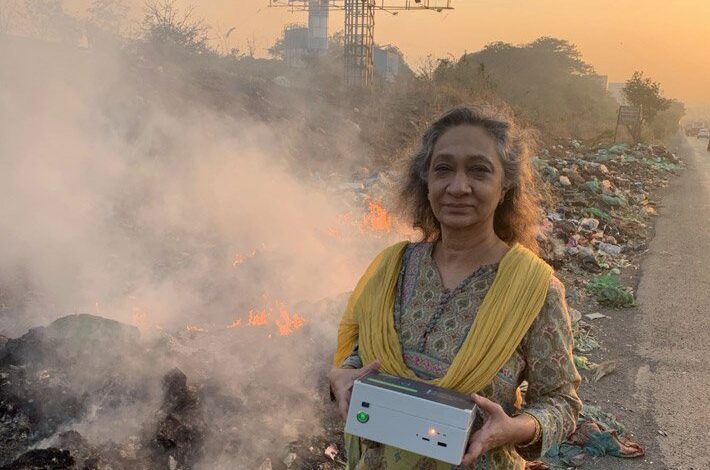
There are sounds that fill our lives, and there are sounds that fulfil. The sounds that fill, but barely fulfil, the streets of every city like roaring engines, honks, loudspeakers, and festive celebrations, instrumentally shape our being. As we grow up, with time, we learn to tune them out. It is because we acquire a growing sense of what we (dis)like, what annoys us, and what we want to get rid of.
It is the invisible dump yard of unwanted noise that we, the urban elites and the middle class, want to get rid of. From cemented roofs and concrete walls, soundproof apartments, buildings, and bungalows to the 7cr. shadhyer moddhyei (easily affordable) lush green residential jungles “only a few minutes away” from the metro station, airport, or the city-centre; the windscreens of luxury cars to low-noise emitting air conditioners, purifiers, kitchen chimneys, and new age noise-cancellation earphones, modern urban living is much about tuning oneself out of the chaos of modernity itself. It is about who can afford to tune themselves out of toxicities: heat, dust, noise, and unwanted people, from entering their lives. For those who can afford it, they dedicatedly labor to earn the luxury of silence, quietude, and calm. But what if someone, instead of tuning out, decided to tune in? Today, I am going to tell the story of a woman who chose to listen for justice. Her name is Sumaira Abdulali. She’s known as the Noise Minister of India. In a city where silence is a luxury, Sumaira chose to bargain for the price of it, not for herself, but for others. This story is about how she made a city pay attention to what it was drowning in.
In Bandra, Mumbai, 2003, Sumaira was attending a wedding ceremony. A sound system played so loudly, it rattled the glass of her ancestral home. She didn’t complain about the incident, nor did she call the police. Sumaira filed a Public Interest Litigation (PIL) in the Bombay High Court. Her case was not just restricted to the wedding event in particular. It questioned how India’s Noise Pollution (Regulation and Control) Rules were being systematically violated. It became one of the country’s first legal recognitions of noise as a form of environmental and public health injustice. With a handheld decibel meter, she began to walk across the city. Listened to temples, mosques, and churches. Ganpati mandals, political rallies, and construction sites. Airport flyovers, nightclub rooftops, even helipads. By gathering the data, she was actually mapping a crisis. A national, global, and most importantly, a planetary crisis. During a Muharram procession in the multireligious town of Mahim, her car was stoned. She filed a complaint, but security was delayed. Soon, she started receiving death threats. Her movements were tracked. Despite everything, Sumaira kept walking, leading the nation with her decibel meter. Finally, the court listened to her. In 2016, the Maharashtra government declared over 1500 official Silence Zones. In these zones, daytime noise was to remain under 50 decibels, nighttime noise under 40. We often don’t pay much heed to the range of noise in our surroundings. We seldom diagnose the extent of loss we go through, and we barely assess what noise does to our health: physical, mental, and environmental. Just because noise is invisible does not mean it is harmless. The decibel meter became Sumaira’s stethoscope. It was her way of diagnosing the city’s illness by amplifying its symptoms.
But Mumbai was not going to go quietly. Honking was second nature. DJs were cultural cornerstones and political processions were untouchable. Her data showed how, during the 2011 Ganpati festival, 90% of processions exceeded legal limits, often by 15-20 decibels. Her reports showed that noise was not just a nuisance. It was a form of exclusion. Children couldn’t study. Patients couldn’t rest. Workers couldn’t sleep. It has to be noted that Sumaira wasn’t anti-festival. She took a firm stand against ecological harm. Her activism was spread across a wide spectrum. She took on illegal sand mining, a noisy, violent, and ecologically devastating industry. She campaigned against rooftop helipads, calling out how urban elites were adding sonic violence to already suffocating skies. When the Bombay High Court ordered statewide noise mapping in 2016, it was a legal milestone born of her decade-long fight. Finally, in 2017, she helped create India’s first public noise map using crowd-sourced data. Citizens across Mumbai began uploading their own readings of noise levels using mobile apps. The data was live. The city was now listening to itself.
Sumaira’s work resonates with an ongoing global concern. In the Global South, where sound often slips through regulatory cracks, others are fighting to be heard, and sometimes, to be silent. In the city of Lagos, Nigeria, Dr. Oluyomi Okunola documented how constant exposure to market noise and church loudspeakers was driving up cases of hypertension. In 2017, local patrols began taking noise readings in slum neighbourhoods. Many of them measured above 100 decibels, day and night. Health rights groups pushed for enforcement in places where silence was a luxury, something that the poor could not afford. In São Paulo, Brazil, the Lei do Silêncio, or the Silence Law, has existed since 1996. But enforcement remained weak until 2010, when Ana Maria da Silva, a mother in Vila Prudente, launched Escute Aqui: it means “Listen Here”, a citizen initiative using decibel meters and WhatsApp groups to flag noisy parties, fireworks, and traffic. And in Manila, Philippines, karaoke is quite beloved but divisive. In some neighbourhoods, it has led to what journalists have called “karaoke killings.” Sound ethnographer Tony Palis began recording these sonic clashes. The intent was not necessarily to silence them, but to ask: whose right to sound counts more? For many, noise is a way to reclaim space and identity. For others, it is a form of displacement. At times, it becomes a language of resistance, too. Yet all of these remain encoded within stories of contested soundscapes across the globe, where some people choose to listen, not for themselves, but for others.
During the 2016 Ganpati festival, Mumbai recorded one of its quietest years in over a decade. Noise complaints in Maharashtra surged, not because things got worse, but because people now knew they had the right to complain. It was a unique example of how silence was not a sign of surrender. It manifested as a mark of citizens’ awareness and agency. It was their right to reclaim the necessary quietude of life. In a country that hears a lot but listens too little, Sumaira Abdulali reminds us that sounds are political. Sounds can heal, sounds can harm. And sometimes, quietude must be fought for.
This story has been featured in the recent episode of Noise and Other Things. If you have a similar story to tell, about your own journey of grappling with everyday sounds, silences, and noises, feel free to share it with me. I would love to read/listen.

